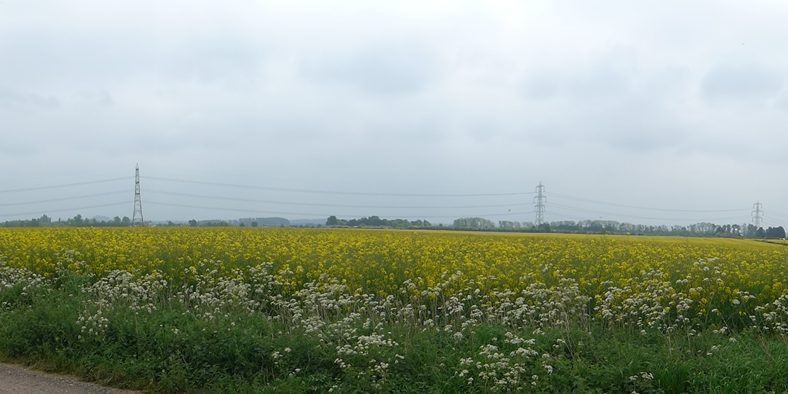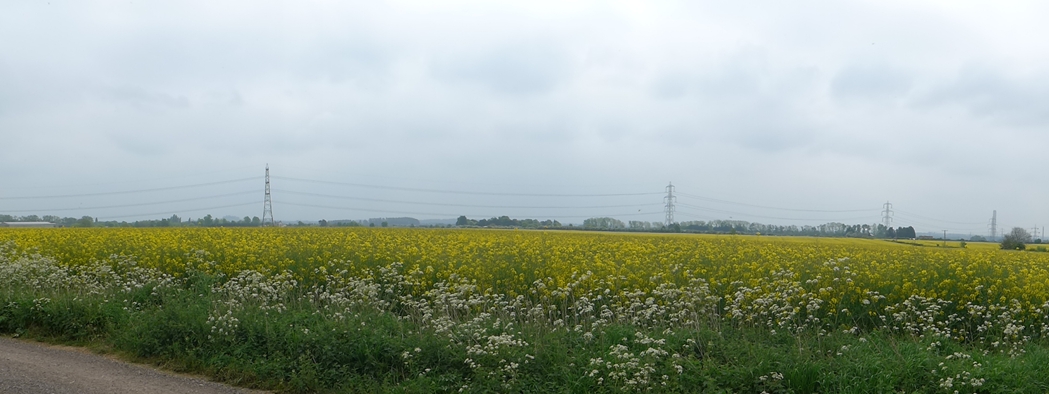Broken planning system leads to dramatic attack on Oxford Green Belt: Cherwell villages & countryside set to be sacrificed for untested figures

18th July 2019

In a travesty of common sense, a Planning Inspector has found Cherwell’s proposals to carve up the Oxford Green Belt are acceptable, despite the fact that Oxford’s needs and capacity have yet to be tested. But the fight isn’t over…
Planning Inspector Paul Griffiths has issued his Post Hearing Advice Note into the Cherwell Local Plan Part 1 Review.
– This sanctions Cherwell’s allocation of 4,400 houses to cater for Oxford’s ‘unmet’ need – even though Oxford’s own needs have not yet been properly looked at;
– Gives the go ahead for at least 3,900 of those houses to be built on Oxford’s Green Belt – although Oxford’s brownfield sites haven’t yet been considered.
Planning system in disarray
CPRE Oxfordshire has said from the outset that the first local Plan to be examined by Inspectors should be the Oxford Plan since so many of the housing numbers in all the other plans arise from “Oxford’s unmet need” – the difference between how many houses Oxford needs and how many it can accommodate.
Inspector Griffiths himself acknowledges the issues raised about testing Oxford’s needs first: ‘it might be said that some means of looking at the housing and other needs of Oxford, and the surrounding Boroughs, simultaneously, in a strategic way, would be a good idea. However, that is not the way in which the planning system is currently set up.’
In CPRE’s view, the housing numbers for Oxford are vastly exaggerated and its capacity under-estimated. This was supported by Planning Inspectors looking at the Oxford Draft Local Plan who have recently refused to move to the next stage over concerns for high housing numbers and lack of evidence of need. (See Oxford Local Plan – Inspectors’ Initial Questions & Comments)
Oxford says it needs 28,000 houses when the Government’s own calculation would be 13,000. Oxford says it can only accommodate 8,600 houses when only two years ago it said 13,000 and CPRE says it could accommodate over 30,000 if it adopted the higher densities the Government recommends and stopped ringfencing land needed for housing for future unnecessary employment.
Nevertheless the Inspector of the Cherwell Local Plan states the overall allocation of 4,400 houses to cater for Oxford’s ‘unmet’ need has been arrived at as a result of a robust process and even goes so far as to suggest that ‘the Oxfordshire Growth Board is a model of how the duty-to-co-operate should work’!
The Inspector finds the allocation of 3,900 houses in Oxford’s Green Belt to be sound, saying that the ‘pressing need to provide homes, including affordable homes, to meet the needs of Oxford, that cannot be met within the boundaries of the city, in a way that minimises travel distances, and best provides transport choices other than the private car, provide the exceptional circumstances necessary to justify alterations to Green Belt boundaries.’
Housing density
The report also supports the Council’s wish to remove the approximate average net density requirement on each of the allocations. He says that ‘Higher density developments, on smaller sites, on the edge of what in some cases are quite small-scale settlements, would appear out of place and have a markedly harmful impact on their surroundings.’
Whilst CPRE agrees that local character must be taken into account, land is a scarce resource that must be used efficiently. Higher density developments encourage sustainability, in terms of services and public transport, and Oxfordshire is in need of smaller, more affordable homes – not executive housing for London commuters. One might debate what the average net density should be on each site, but to remove this obligation altogether would put all the power in the hands of developers.
But good news for Woodstock
Woodstock can sigh, perhaps a temporary, sigh of relief as the proposed 500 houses on the edge of the town has been ruled out on the basis that it would create ‘an incongruous extension into the countryside that would cause significant harm to the setting of Woodstock, and the character and appearance of the area.’ Congratulations to all the Woodstock campaigners who worked so hard to get their voices heard.
Next steps
The next stage is for the Council to consider its response, especially on Woodstock, and to go back to the Inspector. In due course, there will need to be a consultation on the Main Modifications, which may or may not be followed by a further hearing. Only after that will the Inspector issue his final report. So, it doesn’t look like anything will be happening quickly which, given the content, is probably just as well.
CPRE Oxfordshire will continue to engage in this process, as well as exploring other options, to challenge a planning system that is clearly in disarray and to protect our Green Belt for future generations.
Please help us keep up the fight.
